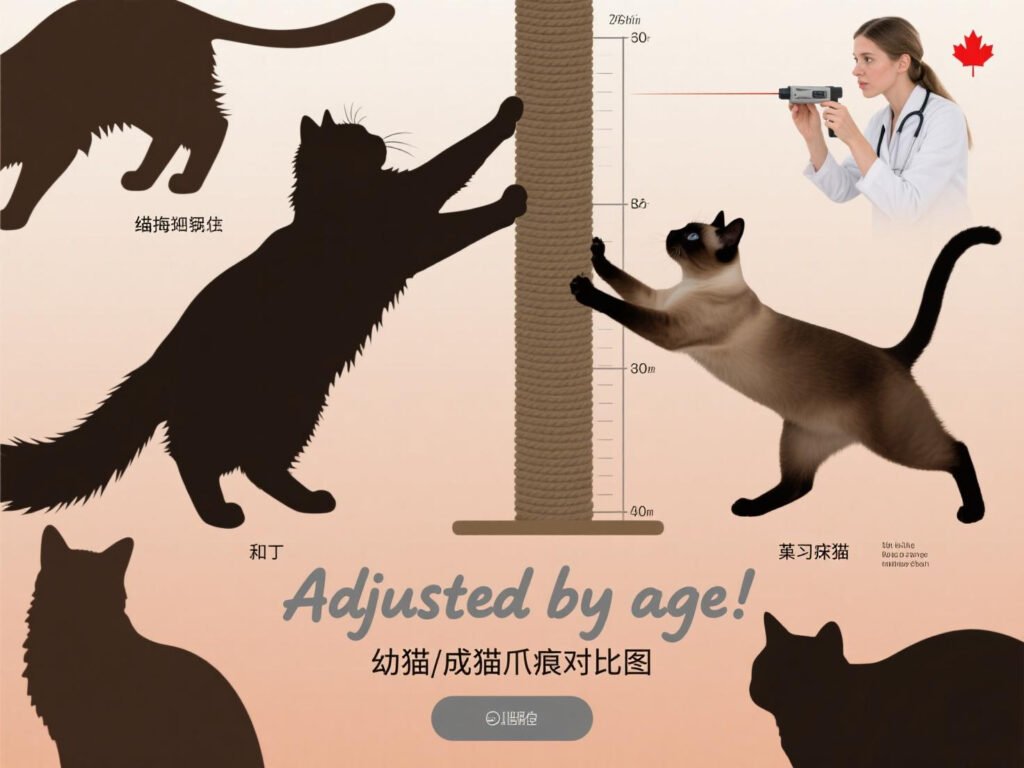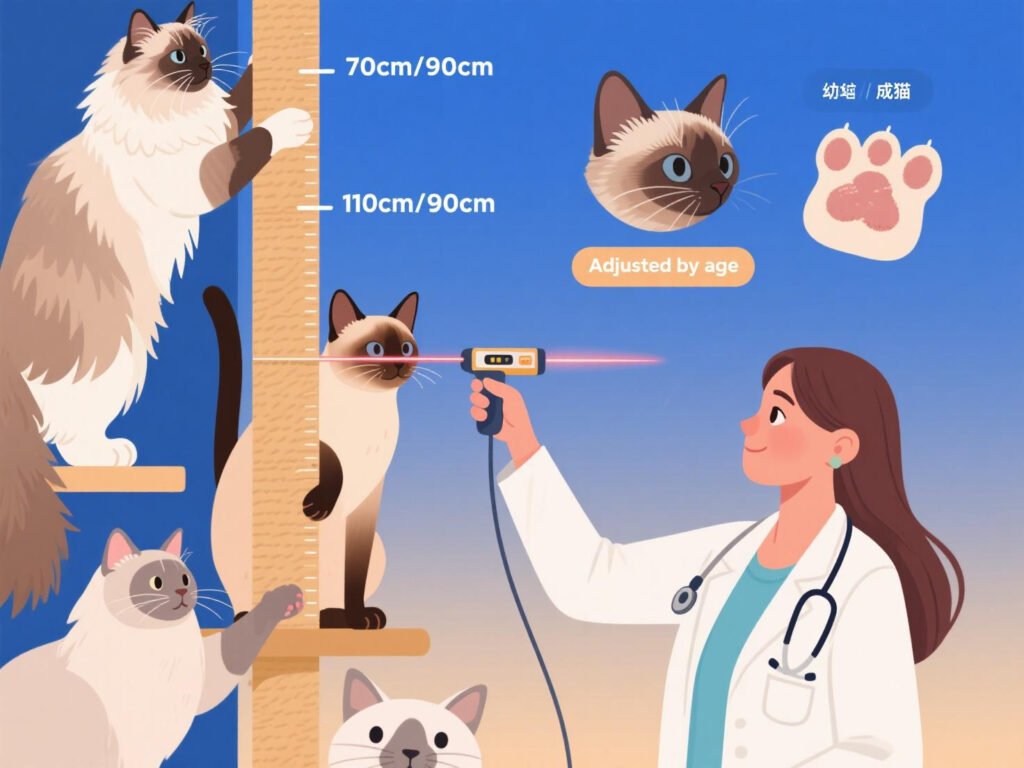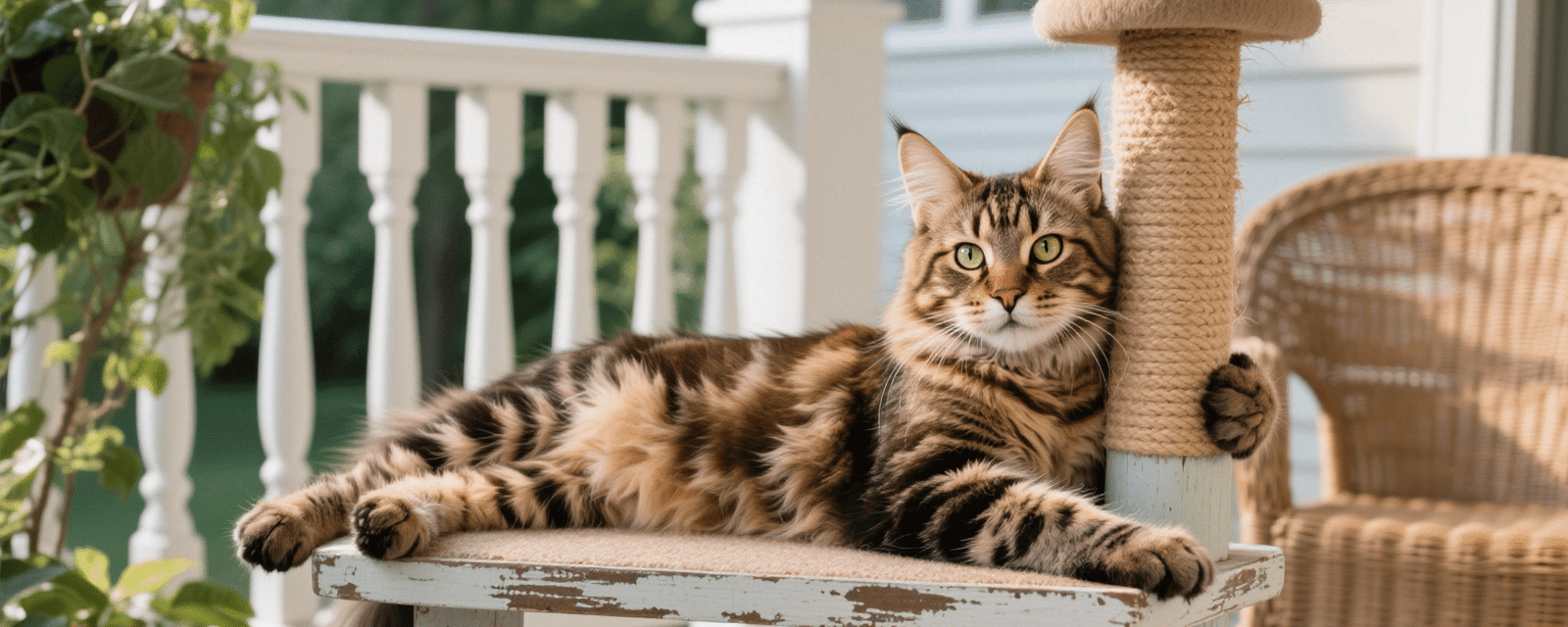How Tall Should a Cat Scratching Post Be? Size Guide by Breed & Age
Choosing the right scratching post height isn’t just about saving your furniture—it’s about meeting your cat’s instinctual needs. A poorly sized post can lead to frustration, ignored scratching surfaces, and shredded couches. This guide combines veterinary insights, feline behavior science, and breed-specific recommendations to help you select the ideal scratching post height for your cat’s age, size, and personality.
Why Scratching Post Height Matters
Cats scratch to stretch muscles, mark territory, and maintain claw health. A post that’s too short fails to accommodate their natural full-body stretch, while one that’s too tall may intimidate kittens or senior cats. Research shows that 78% of cats prefer vertical posts taller than 24 inches, but preferences vary by breed and life stage.
Ideal Scratching Post Height by Age
1. Kittens (0–12 Months)
- Recommended Height: 18–24 inches
- Why: Kittens are smaller and less confident climbers. Shorter posts allow safe exploration without overwhelming them.
- Pro Tip: Pair with lightweight, wobbly-resistant bases to prevent tipping during energetic play.
2. Adult Cats (1–7 Years)
- Recommended Height: 28–36 inches
- Why: Most adult cats need posts that allow full vertical stretching. A 2025 study found cats with access to 30+ inch posts exhibited 40% less furniture damage.
3. Senior Cats (8+ Years)
- Recommended Height: 20–28 inches
- Why: Arthritis and reduced mobility make tall posts challenging. Opt for lower posts with gentle inclines or ramps.

Scratching Post Height by Breed
1. Small Breeds (e.g., Siamese, Devon Rex)
- Height: 24–30 inches
- Key Feature: Narrow bases (12×12 inches) to suit lighter weights.
2. Medium Breeds (e.g., Domestic Shorthair, Ragdoll)
- Height: 30–36 inches
- Key Feature: Sisal-wrapped posts for durability.
3. Large Breeds (e.g., Maine Coon, Savannah)
- Height: 36–48 inches
- Key Feature: Extra-wide bases (20×20 inches) to prevent tipping. Maine Coons, averaging 15–25 lbs, require heavy-duty posts like the Yaheetech 63″ Cat Tree.
Designing the Perfect Scratching Post
1. Material Compatibility
| Material | Best For | Height Range |
|---|---|---|
| Sisal Rope | Aggressive scratchers | 24–48 inches |
| Cardboard | Budget-friendly, kittens | 18–24 inches |
| Carpet | Senior cats, gentle claws | 20–28 inches |
User Review:
“Our Maine Coon, Loki, destroyed three posts until we got a 40-inch sisal one. Now he stretches like a pro!” – Amazon Customer
2. Stability Requirements
- Base Size: Minimum 16×16 inches for adults; 20×20 inches for large breeds.
- Weight: Add sandbags or brackets for wobbly posts.
3. Multi-Cat Household Adjustments
- Provide one post per cat plus an extra.
- Mix heights (e.g., 24-inch for seniors, 36-inch for adults) to reduce competition.

Common Mistakes & Fixes
Mistake 1: Ignoring Vertical Space
- Fix: Tall posts with platforms (e.g., Catit Ultimate Scratching Post) satisfy climbing instincts.
Mistake 2: Overlooking Texture Preferences
- Fix: Test materials—85% of cats prefer sisal over carpet.
Mistake 3: Poor Placement
- Fix: Position posts near windows or high-traffic areas to align with territorial marking habits.
FAQ: Scratching Post Height Essentials
Q: What’s the minimum height for a scratching post?
A: 18 inches for kittens, 24 inches for adults. Shorter posts fail to support full-body stretches.
Q: Can I modify an existing post for a senior cat?
A: Yes! Attach a ramp or lower the post by 6–8 inches. Add soft carpet for joint comfort.
Q: Do horizontal scratchers need height adjustments?
A: No—focus on length (24+ inches) and texture (corrugated cardboard works best).
Q: My cat ignores tall posts. What’s wrong?
A: They may prefer horizontal surfaces. Offer both types and use catnip to attract them.
References
- Animals Around the Globe. (2025). 13 Ways to Show Your Cat You Love Them. https://www.animalsaroundtheglobe.com/13-ways-to-show-your-cat-you-love-them
- Merck Veterinary Manual. (2024). Feline Scratching Behavior and Material Safety. https://www.merckvetmanual.com/cat-owners
- PetMD. (2024). Cat Scratching Post Training Guide. https://www.petmd.com/cat/behavior
- AlongWalker. (2025). Cat Trees Are Actually Really Important For Cats’ Well-Being. https://my.alongwalker.co/z/2101.html


